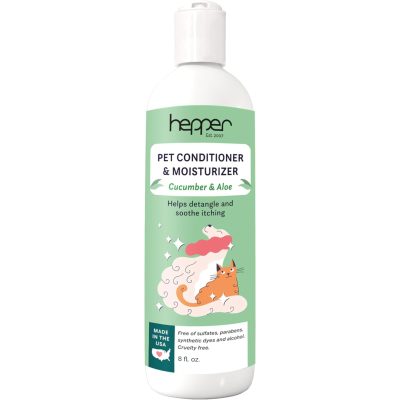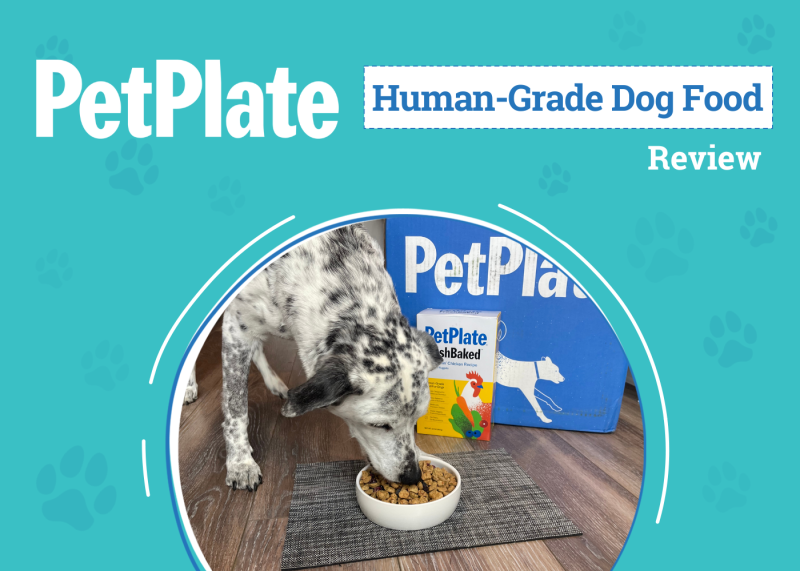In this article
View 2 More +Grooming helps to keep your dog from becoming a matted hairy mess. In many cases, it may be best to have your dog professionally groomed. Professional groomers can check for skin issues, pest infestation, and other skin, ear, or coat issues that you may not notice on a day-to-day basis. So, do dogs feel better after grooming?
Every dog will react to professional grooming differently. And if you’re taking your dog to the groomer for the first time, it may be challenging to determine how they feel afterward or anticipate how the first session will go. So, how do dogs feel after grooming? Do they enjoy it or do they loathe it? Let’s discuss.

How Do Dogs Feel After Grooming?
While every dog is different, some dogs may feel a bit worn out, sad, or even appear depressed after a grooming session. But in some cases, especially those in which the grooming session was overdue, the dogs may seem energetic and happy to have a haircut and freshly clipped paw pads.
But most professional dog groomers and everyday dog owners will probably tell you that dogs simply don’t like going to the groomer. During the grooming session, it’s common for dogs to exhibit certain behavior problems, such as biting, barking, scratching, and trying for dear life to wrestle out of the grips of the groomer. But don’t worry, groomers are used to this.
Grooming sessions can cause dogs to feel anxious and fearful. And in some cases, the session may be uncomfortable or even slightly painful for them. Overall, it’s the novel scenario, being submissive, and their discomfort that makes them feel negatively after the session and nervous before the process starts.
Our Favorite Products
Selecting the right shampoo and conditioner makes the world of a difference when grooming your pup. Our favorite products are the duo by Hepper. The Oatmeal Pet Shampoo is formulated with aloe and oatmeal to soothe skin and hydrate the coat. The Pet Conditioner works at eliminating tangles and taming frizz and static. Both products are pH-balanced and formulated with pet-friendly ingredients, free of harsh soaps, chemicals, and dyes. Give this duo a try to heal and nourish your dog's coat, and leave them with an irresistible just-left-the-spa cucumber and aloe scent.
| Image | Product | Details | |
|---|---|---|---|

|
Hepper Oatmeal Pet Shampoo |
|
Check Price |

|
Hepper Pet Conditioner |
|
Check Price |
At Dogster, we’ve admired Hepper for many years and decided to take a controlling ownership interest so that we could benefit from the outstanding designs of this cool pet company!

Signs Your Dog May Be Feeling Sad After Grooming
There are tell-tale signs that your dog will give off if they’re feeling a bit blue after a grooming session. Noting these signs can help you to determine if your pup is experiencing stress or even momentary doggy blues.
- Constant barking or whimpering
- Sudden low-energy
- Agitation or Aggressiveness
- Avoiding you or other members of your home
- Shyness (scared to come out of its cage once back home)
- Any other notable change in behavior
Depression in dogs actually isn’t that different than in adults. Instead, dogs simply present signs of anger, fear, suspicion, or shyness when they’re feeling blue. They may retreat to their beds or cages for the rest of the day or have a decrease in appetite.
If your dog is showing depression signs, we suggest you speak to a vet.
If you need to speak with a vet but can't get to one, head over to PangoVet. It's our online service where you can talk to a vet online and get the advice you need for your dog — all at an affordable price!


The 7 Ways to Make Grooming Trips Better for Dogs
Here are some tips to help make your dog more comfortable before, during, and after the grooming process. Keep in mind it may take some time, so patience is key.
1. Personalize It
If your dog acts weird after grooming then picking the right pet groomer will make the experience less intimidating. Ask your groomer if it’s possible to conduct a test visit with your dog without having any actual grooming done. You can even ask staff to practice handling your dog and reward them with treats.
Try to use the time to familiarize your pup with the sounds and sights of the groomer. Make sure you give them lots of treats after the visit to associate groomers with “good” things and positive experiences.

2. Find Ways to Reduce Stress During the Car Ride
It’s well known that car rides can cause anxiety in some dogs. A dog arriving at the groomer can be especially anxious and stressed, making the grooming process more difficult. Your dog might dislike the car for a few reasons. Trying to find ways to make your dog’s car ride more comfortable.
For example, give them a few treats or an extended playtime session before or after the visit to the groomer. And if your dog seems to suffer from nausea during car rides, anti-nausea medicine before the trip can be helpful. Alternatively, you can opt for one of the on-demand groomer services that bring the groomer right to your doorstep. This might be a great way to avoid the pre-groomer stress and let the dog be in familiar territory.
3. Get Creative
If possible, sit in for the first grooming and try to note specific steps in the grooming process that seem to make your dog uncomfortable or anxious, if any. If your dog gets scared when being lifted onto the grooming table, then you might consider alternatives such as stairs or ramps that allow them to climb up independently.
Place towels or anti-slip mats underneath your dog if they aren’t happy with the slippery wash tub or grooming table. If your dog doesn’t like running water around their head, ask the groomer to use facial wipes or lightly dampened towels.
Or, if they’re sensitive to sound or paw grooming, have them use products such as the Scaredy Cut Silent clippers. It’s the small changes, such as increasing the number of treats or changing the temperature of the water, that can make a big difference in reducing stress levels for your dog.

4. Consider a Muzzle in Extreme Cases
A muzzle could help to make grooming easier and safer for the groomer and the dog. This is especially true if your dog is used to restraints and muzzles. A bit of muzzle training can help reduce the need to use restraints and protect your pet from the consequences of biting.
You can train your dog to put their nose in the muzzle with a soft and spreadable treat like peanut butter. A basket muzzle with small openings will work best. This allows your dog to enjoy treats while the muzzle is on.
5. Perform Certain Grooming Steps at Home
Many grooming tasks can be done at home, such as trimming long hair, clipping nails, and rinsing the pup’s head and around their eyes. You can do all of these tasks at home, saving your pup trips to the groomer.
You’ll be able to groom your pet in a more relaxed environment, which can reduce their bad behavior and get them accustomed to the grooming process firsthand. This is great for a dog’s first grooming session, as it’ll introduce them to the process and help you take note of how best to handle them.

6. Have a Little Playtime First
It helps if your dog is a little bit tired before the grooming session. Not only will this take some of the fight out of their aggressiveness, but it can make them more amenable to the process overall. They’ll likely be too tired to put up a big fight and may be more laid back while getting a bath. After the groomer is done, be sure to reward them with treats or even more playtime, thus following up the “bad” experience with a good one.
7. Make Sure the Dog Is Ok Being Handled Everywhere
Unlike people, dogs can’t really verbalize their boundaries. Their response to discomfort is to bark, bite, or to attempt a retreat. Make sure your dog is comfortable with being handled. Grooming sessions will usually include handling sensitive areas such as the pup’s muzzle, ears, tail, groin, and paw pads.
You can train your dog to be more relaxed when touching sensitive areas. Before you take your dog to the groomer, find out about their process and steps for cleaning and trimming dogs–don’t be afraid to get details. If your dog gets used to and desensitized to be touched by you and others before showing up to the groomer, this will make the process easier for everyone involved.
You can then practice these grooming steps at home. Try out cue words such as “nose” or “paws” to let the pup know that you’re going to touch a specific area. If they stay calm, reward your dog by giving a tasty treat immediately. Note that if your dog is sensitive to a specific area, such as the tail, paw pads, or face, you can start by gently massaging this particular area.


Wrapping Up
Keep in mind that these techniques may not work for every single dog. However, with proper preparation comes some training, and with the right approach, you can help your dog grow more comfortable with the grooming process, even if it’s just a little bit. You can even talk to your groomer or a veterinarian about the best ways to help the pup adapt to it.
Related Reads:
- Akita Samoyed Mixed Dog Breed: Care, Pictures, Info, & More
- Akita Collie Mixed Dog Breed: Care, Pictures, Info, & More
Featured Image Credit: Tima Miroshnichenko, Pexels




















